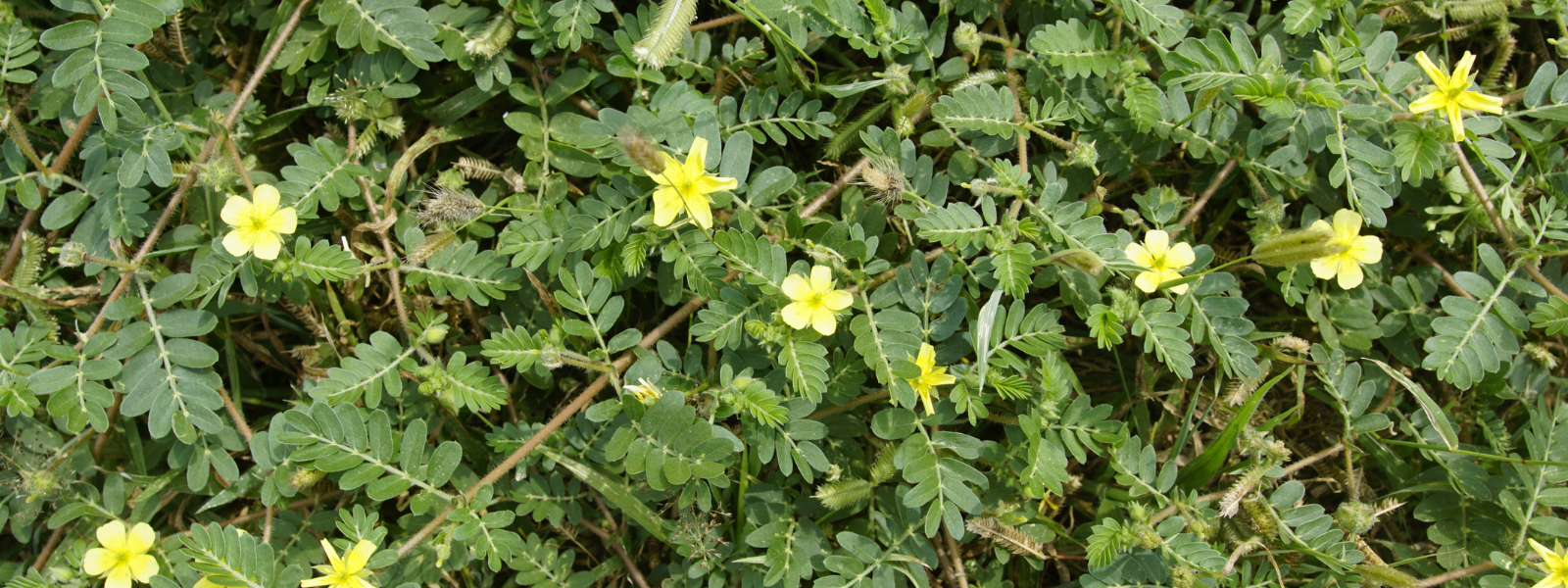
Common Name
Caltrop, puncturevine, goats head, yellow vine cat's head
Scientific Name
Tribulus terrestris
Family
Zygophyllaceae
Lifecycle
Annual
Seasons of Growth
Spring to Autumn
Key Distinguishing Feature
Low-growing plant with spiky fruits.
• Growth Form: Caltrop is a low-growing, prostrate plant with spreading stems.
• Leaves: The leaves are pinnately compound, with opposite leaflets. Each leaflet is small, narrow, and lance-shaped.
• Flowers: The flowers are small and yellow and have five petals. They typically occur singly or in small clusters.
• Fruit: The most distinctive feature of Caltrop is its fruit, which consists of a hard, woody nutlet with four sharp, rigid spines or thorns. These thorns are capable of puncturing tires, hooves, and feet.
• Habitat: Caltrop is commonly found in dry, sandy, or disturbed areas, including roadsides, pastures, and vacant lots.
Ecological Impact:
• Caltrop is considered a noxious weed in many regions, as its spiny fruit can injure people and animals, and it can outcompete native vegetation in disturbed areas.
• The spiny nutlets are responsible for the common name "Goathead," as they resemble a goat's head with sharp horns.
Control Methods:
• Control of Caltrop often involves a combination of mechanical and cultural methods.
• Mechanical methods include regular mowing or cutting before the plants produce mature fruit, reducing their ability to spread.
• Preventing the introduction and spread of Caltrop by cleaning vehicles and equipment that may carry its seeds is important.
• Herbicides may be used for control, but care must be taken to use them safely and effectively, following local regulations.
• Promoting healthy, competitive pastures or lawns can help reduce the establishment of Caltrop.
Due to its invasive and noxious nature, managing Caltrop is important to prevent its spread and the harm it can cause to people, animals, and ecosystems. Local agricultural authorities often provide guidance on the best control practices for this weed.
Key Products for Control:
-
Adama Ametrex - Ametryn
-
Adama Sierra - Saflufenacil




